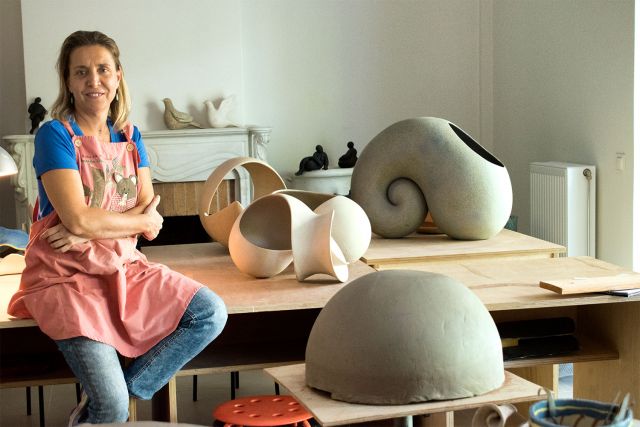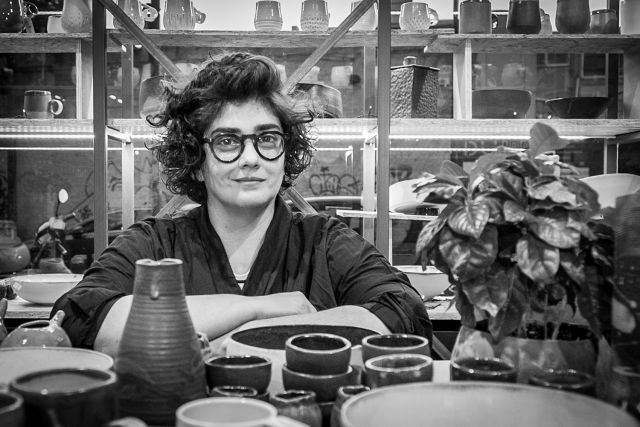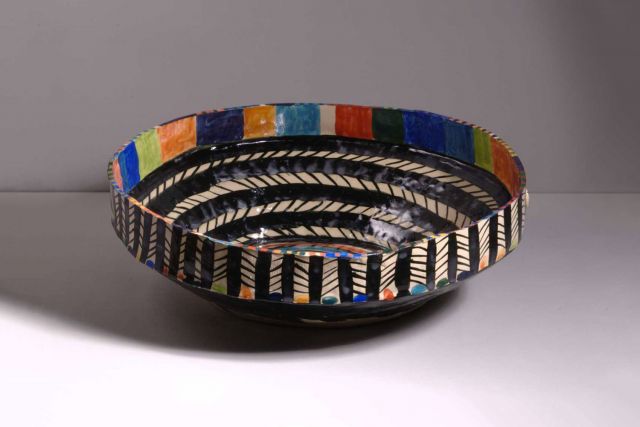The Fertility Goddesses are inspired by statuettes of the Minoan Age which represented the Goddess of Fertility. These creations by Manousos Chalkiadakis can be used as flower pots or candle holders.
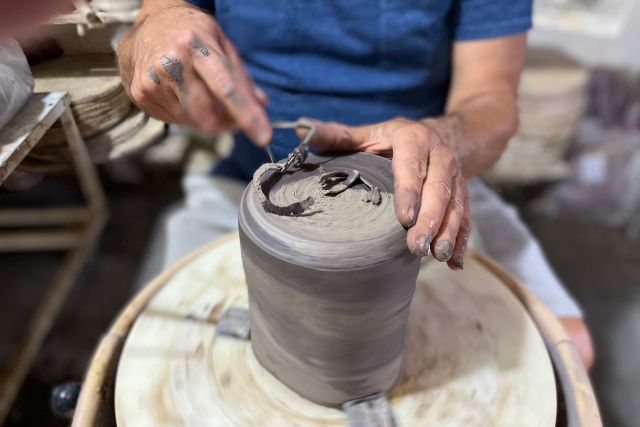
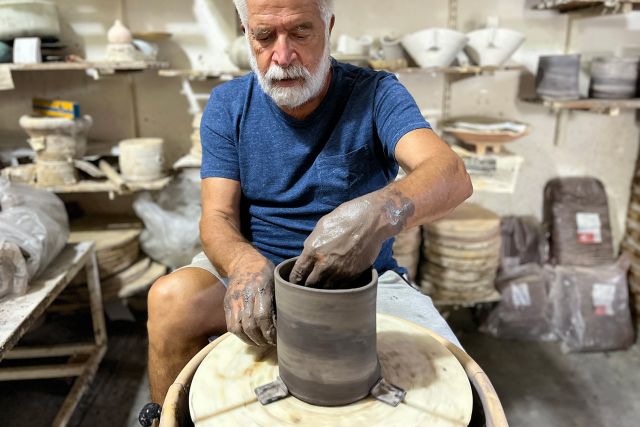
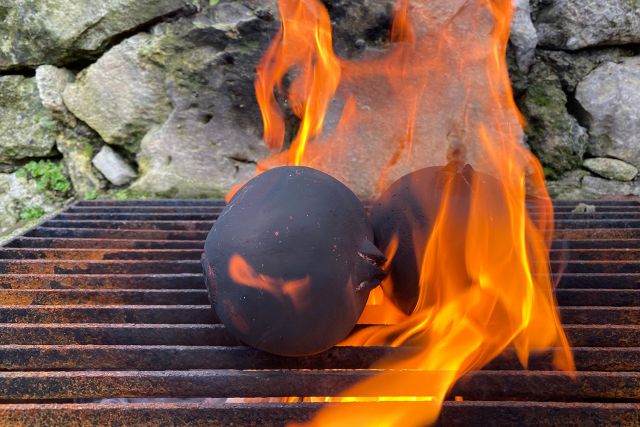
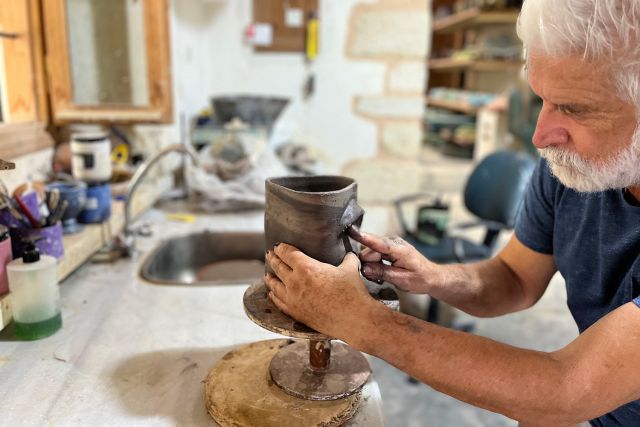
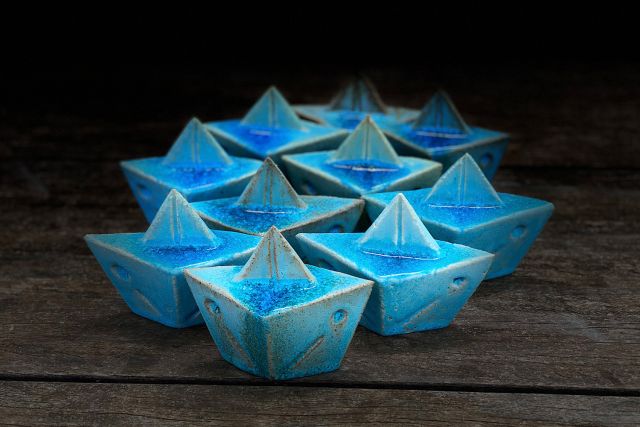
Manousos Chalkiadakis
- Ceramicist
- Chania, Greece
- Master Artisan
Paidochori, 73008 Chania, Greece
By appointment only
+30 6947270355
Ceramics in honour of Crete
- • Manousos makes ceramics in a village near Chania, in Crete
- • The volcanic glazes that he uses are distinctive
- • One of the special techniques he uses is the primitive technique called “smoked”
Manousos Chalkiadakis studied Economics and Law but he soon realised he did not want to pursue this course. He chose to express his artistic soul with various forms of art such as painting, photography, and jewellery making. Manousos started learning the ceramic craft when he worked as an assistant at a ceramic workshop in Athens. “The moment I visited this workshop, I knew I wanted to follow this path,” he says. In 1987, he returned to Chania and renovated an 18th-century Venetian ruin in the village of Paidohori, which now houses both his workshop and his home. Manousos’ ceramic work reflects his surroundings. “Almost all of my creations and the colours I create are inspired by the environment I live in, the nature all around me and the place that I love deeply, the island of Crete.”
Read the full interviewWorks
Photo: ©Manousos Chalkiadakis

Photo: ©Manousos Chalkiadakis
This bowl is inspired by the Cycladic figurines which were the first sample of art of ancient Greek culture.

Photo: ©Manousos Chalkiadakis
Spinning tops have been known since ancient times. They were made of wood and remind us of our childhood. These blue porcelain spinning tops made by Manousos Chalkiadakis are decorative.

Photo: ©Manousos Chalkiadakis
This imposing ceramic statue refers to the mythical entity in Greek mythology who had a human body and a bull's head.

Photo: ©Manousos Chalkiadakis
The ceramic watermelon is a piece of sculpture meant to bring to the viewer's mind a vivid memory of Greek summer.





